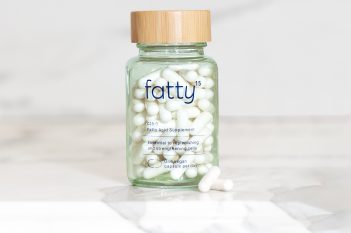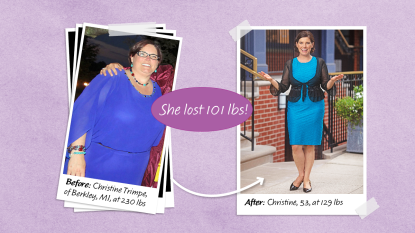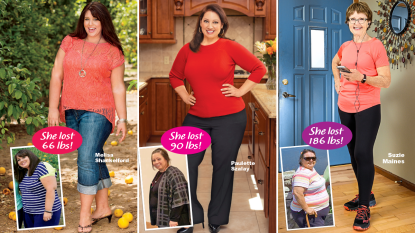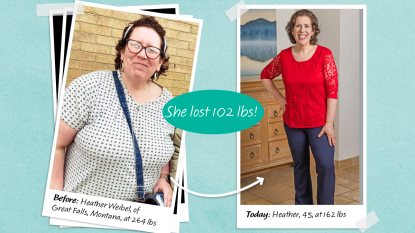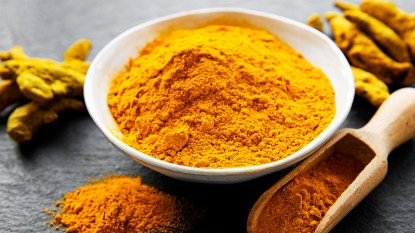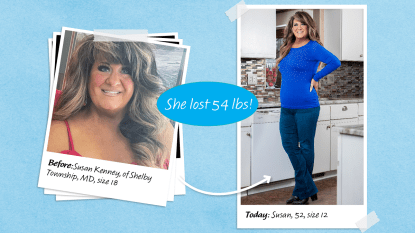This 15-Day Intermittent Fasting Plan Burns Stubborn Belly Fat and Triples Your Energy
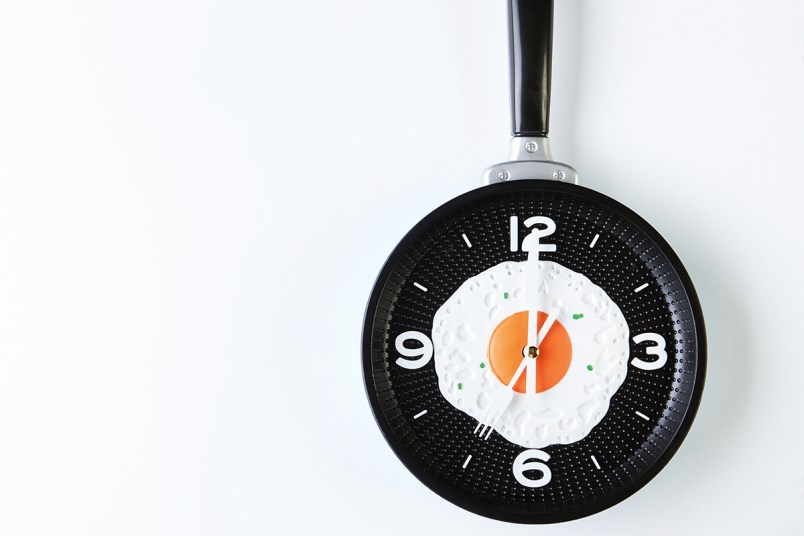
Call to mind your computer. As you search the web, scroll through Facebook, or put together a digital album of your family photos, programs run in the background, eliminating viruses and updating software to keep the machine running smoothly. If the operating system skips an update, though, your computer might start acting buggy: The system takes longer to boot up, websites don’t load as fast, or your keyboard lags when you type.
Now imagine that a similar operating system is responsible for keeping the cells in your body functioning optimally. As cells tackle day-to-day functions like pumping out hormones and producing energy, a mechanism called autophagy runs in the background, clearing away the cellular waste and free radicals created by these metabolic processes.
What is autophagy?
“Autophagy is an essential cleaning process that the body uses to ‘recycle’ the damaged or non-useful parts of our cells,” explains Richard Wang, MD, PhD, a scientist at the Center for Autophagy Research at the University of Texas Southwestern Medical Center in Dallas. “The by-products are broken down into their components, which can then be used to build new cells.”
In effect, autophagy allows the body to continuously update itself, reusing damaged parts and materials to build fresh, new cells. And these new cells work to maintain the proper function of weight-regulating organs and glands, balance hormone levels, prevent illness, and stave off signs of aging.
The problem is that as we age, the body’s natural self-cleaning system slows down and causes metabolism to slow with it. “Our natural ‘recycling centers’ become less efficient as we age,” says Dr. Wang. “And there is evidence that the decreased efficiency of this process causes disease and aging.”
He explains that as cellular debris and free radicals build up in cells, cellular energy production engines (called mitochondria) become damaged. This makes metabolism run less efficiently and hinders cells’ ability to optimally produce hormones and energy. And while the body is still able to build new cells (using nutrients from the food we eat), this process also slows as we age.
That means there is less cellular turnover to repair organs and other tissues. “It’s not just that the deterioration of our cells is bad, it’s also the decline in our ability to fix it,” says certified nutritional consultant Naomi Whittel. “This combination accelerates aging at a cellular level — and later, at an observable level in the form of weight gain, dull skin, and low energy.”
Fortunately, Nobel Prize–winning science has uncovered a strategy that reignites cells’ self-cleaning system to make slimming down effortless. “Research shows that the best way to turn autophagy up is to naturally induce a small amount of stress on your body by creating a short-term nutrient shortage,” explains Whittel. Indeed, the research published in the journal Cell revealed that simply cutting back on protein-rich foods a few days a week creates an amino acid shortfall and acts as a painless physiological stressor that automatically engages the body’s cellular cleanup cycle. As a result, cellular debris is quickly cleared away and cellular tissue repair is restored, helping to kick-start metabolism and send fat burning into high gear. The payoff: Women we spoke to report effortless slimming at a rate of up to 10 pounds per week.
As cells begin self-cleaning again, the benefits multiply. “The best part about this is that you can make small changes and your body will start experiencing big results,” says Whittel. “You will boost your skin’s radiance, get better sleep than ever, have endless energy, and restore your cells to the ways they worked when you were young.” This brings incredible anti-aging benefits, including 30 percent fewer wrinkles and 25 percent more even skin tone. Research also shows that boosting autophagy can improve cognitive function, strengthen the immune system, and reduce cancer risk.
Read on for the easy meal-timing tweaks that will program your cells to self-clean so you can look and feel your best.
How to Activate Autophagy and Lose Weight
Activating autophagy — the body’s cellular detoxification process — allows the body to more effectively repair and renew at the cellular level to release fat, revive dull skin, and increase energy. “Many women feel frustrated, like they have to turn their lives around 180 degrees to get results,” says natural health expert Naomi Whittel, author of Glow15 (Buy on Amazon, $15.54). But, she asserts, the beauty of autophagy is that getting the benefits doesn’t require deprivation or long sweat sessions.
The key to setting this process in motion, Whittel says, is triggering minor physiological stress by cycling protein intake throughout the week. “Your body can’t create protein. So when you deprive it of protein, it kicks your body’s recycling program — its autophagy — into overdrive,” she notes. “But being in a constant state of low protein can actually contribute to aging in the form of muscle wasting, so you can’t restrict your protein all the time.” To strike the ideal health-boosting balance, Whittel recommends eating a low-protein diet three nonconsecutive days each week and a higher-protein diet the other four days.
For best results, Whittel recommends intermittent fasting or time-restricted eating on low-protein days, so you’ll eat all the day’s meals within an eight-hour period (say, between noon and 8 p.m.). This gives the cellular detox system even more time to repair damage and flush toxins. “Briefly restricting eating is a key activator of autophagy,” says Whittel. “In fact, this is the most natural way to put your cellular cleanup crew to work.”
To ensure the pounds melt away during the cellular detox, Whittel also recommends eliminating processed foods and refined sugar, which can impair autophagy.
Rev Cellular Detox With Low-Protein Days
On Monday, Wednesday, and Friday of each week, you’ll combine intermittent fasting with a diet rich in high-fat low-protein foods. Just skip breakfast — this will allow you to keep all the day’s meals within an 8-hour window. Then, stick to 25 grams of protein daily — that’s roughly the amount in three-ounce cut of meat or poultry, four ounces of fish, four eggs, one cup of Greek yogurt, one cup of lentils. or two-thirds cup of beans. You can spread that 25 grams across the whole day’s meals and snacks.
Low-Protein Meal Plan
Breakfast: If you’re hungry, Whittel suggests drinking unlimited tea or black coffee. Antioxidants in the drinks raise levels of the craving-reducing brain chemical serotonin.
Lunch: Enjoy half an avocado stuffed with black beans and fresh salsa, or filled with mozzarella and tomato.
Snack: Munch on dark chocolate–coated nuts, fruit salad, or kale chips.
Dinner: Fiesta Grain Bowl Recipe: Top 1/2 cup of brown rice with 1/2 cup each of diced tomatoes, sliced bell peppers, and sliced onions. Add 2/3 cup of black beans. Garnish with cilantro.
Fire Up Metabolism With High-Protein Days
On the weekend and on Tuesdays and Thursdays of each week, you’ll double your protein intake. This works to switch the body’s cellular detox cycle back to maintenance mode and supports the growth of metabolism-revving lean muscle mass, which will help stave off aging and keep fat burning fired up.
You can eat what you like on these days, but it’s key to time carbs and fat right. “When you eat is as important as what you eat,” stresses Whittel. Studies show that starting the day with nutritious fats — like avocado, eggs, bacon, full-fat coconut milk, full-fat Greek yogurt, and full-fat cheese — kick-starts metabolism for the day, helping you achieve sustained energy. To get the benefits, Whittel likes to start the day with fat-rich mini egg cups made in cupcake tins, which make a protein-packed and highly portable breakfast. (Multiply the recipe below by four to make a whole week’s worth.)
Since carbs deactivate the cellular cleaning process, Whittel recommends avoiding them during the day to maintain fat burning. But that doesn’t mean carbs are off the menu: Instead, she suggests enjoying select carbs (including one medium sweet potato or a half cup of brown rice, black rice, or quinoa) at dinnertime. These picks provide filling fiber and work to steady blood sugar while fostering the production of sleep hormones to help you snooze more soundly.
High-Protein Meal Plan
Breakfast: High Protein Egg Cup Recipe: Whisk 3 eggs, 1/4 cup of chopped spinach, and 1/4 cup of shredded mozzarella. Divide among 2 greased muffin wells or ramekins. Bake at 350°F for 20 minutes.
Lunch: Thai Wraps Recipe: In a bowl, combine 2 oz. of diced turkey, 3/4 cup of sliced cabbage, 2 tsp. of nuts and 2 Tbsp. each of lime juice, peanut butter, and tamari sauce. Spoon into lettuce wraps.
Snack: Garlic Hummus Recipe: In a food processor, combine 1 (15 oz.) can of chickpeas, 1/4 cup of tahini, 1 small garlic clove, and 1/4 cup of extra-virgin olive oil until smooth. Serve with cut vegetables.
Dinner: Beef Stir-Fry Recipe: Stir-fry 2 oz. of beef with 1 cup of mixed sliced carrots, bell peppers, cabbage and green onions. Toss with 2 Tbsp. of stir-fry sauce. Serve over 1/2 cup of brown rice.
Intermittent Fasting Success Stories
Simply stepping on the scale sent Kay Garriott into panic mode. “Oh no, not again,” she cried. “Not again.”
Since the age of 14, Kay had watched unwanted pounds go from “lost” to “found” more times than she could count. “I felt like I was doing something wrong,” she says. Over time, she began to realize what her weight could cost her. “My husband and I want to spend forever together. But with my health, I didn’t see that lasting much longer.”
That’s when Kay started noticing the term “intermittent fasting” popping up online. “I’d never heard of fasting, except for religious reasons,” she admits. But she decided, “What the heck, I’ll try it. It’s free.”
Following advice from Gin Stephens — author of Delay, Don’t Deny (Buy on Amazon, $16.51) — who recommends intermittent fasting and low-protein days to promote autophagy, Kay shed 3 belly inches the first two months without feeling hungry. She stayed on the plan and continued to slim, plus put an end to hot flashes, joint pain, and pre-diabetes in the process.
Kay has maintained her weight for more than a year, and says, “There are no words to express how thankful I am.”
Treats That Speed Slimming
A class of antioxidants called “polyphenols” have been shown to power up cellular detox and switch on skinny genes. These polyphenol-rich snacks from Whittel make it easy to get the benefits.
Low-Protein Snacks
Macadamia Bark Recipe: Melt 10 1/2 oz. of dark chocolate. Pour 2/3 of the chocolate onto a parchment-lined baking sheet. Sprinkle with 1 cup of chopped macadamia nuts. Cover with remaining chocolate. Refrigerate 2 hours, then cut into 16 squares and store at room temp.
Baked Pears with Walnuts Recipe: Halve and core 2 pears; place flesh side up on a baking sheet. Sprinkle with 1/4 tsp. of cinnamon and divide 1/4 cup of walnuts among centers. Bake at 350°F for 30 minutes or until tender. Top each half with berry puree and 1/4 cup of Greek yogurt, if desired.
High Protein Snacks
Nutty Chia Cluster Protein Balls Recipe: Melt 2 Tbsp. of coconut oil, 1/4 cup of maple syrup, and 2 Tbsp. of almond butter, stirring until smooth. Off heat, add 1/4 cup of chopped walnuts, 1 cup of puffed rice cereal, and 2 Tbsp. of dark chocolate chips. Scoop 6 balls onto parchment. Chill 2 hours. Store in freezer.
High Protein Black Bean Brownie Recipe: In a food processor, puree 1 (15 oz.) can of black beans, 2 bananas, 1/4 cup of coconut oil, 1/2 cup of almond butter, 1/2 cup of raw cacao, 3 drops of stevia, 1/4 tsp. of sea salt, and 1 tsp. of vanilla. Pour into an 8-inch square pan and bake at 350°F for 30 minutes or until firm.
Day 16 & Beyond: Uncover Your Dream Body
After 15 days, your cellular detox system will be running optimally, and you can repeat the 15-day cycle as often as you want to keep slimming to your happy weight. If you repeat the plan, Whittel recommends experimenting with your low and high days to see what works best for your body. “Some women respond well to four low days, while others find their body prefers just two,” she says. “If you choose to experiment, I recommend doing so in 15-day increments so you can assess your results.”
Relax Your Way to Weight Loss
While small amounts of stress activate autophagy, mental stress and cortisol surges actually impair detox. That’s why Whittel advises pampering yourself to ease mental stress. Here are some of her feel-great strategies.
1. Perk up with “power-phenol” foods.
Certain foods — including green tea, berries, cinnamon, citrus fruit, chocolate, and wine — contain powerful antioxidants called polyphenols that dial up autophagy to repair cellular damage. You can enjoy the anti-aging perks of these “powerphenols” by eating these foods.
2. Brush your skin.
“Dry-brushing stimulates circulation, which encourages waste to leave the body faster,” says Whittel, who uses her dry brush each morning. To try it at home: Use a long-handled brush with firm bristles to make short, firm strokes on your legs, belly, and arms, always brushing toward your heart. For best results, Whittel recommends brushing for about 10 minutes per day. And for even more anti-aging benefits, massage a DIY coffee scrub onto just-brushed skin in the shower once a week. The mix Whittel likes: 1 cup of coffee grounds, 3 Tbsp. of sea salt, and 6 Tbsp. of coconut oil. Leftover scrub keeps in the refrigerator for up to two weeks.
3. Unwind with heat.
Researchers report that raising core body temperature triggers heat stress — another powerful autophagy activator — while also dialing back the emotional stress that can slow cellular detox. Using a steam room or sauna or taking a hot yoga class is an easy way to get the benefits, but you can also get the perks from a warm bath.
Studies at Loughborough University in the United Kingdom show that taking a very hot bath for 20 minutes at least four times a week can help purge toxins, diminish wrinkles, and rev metabolism. For a bigger boost, Whittel suggests adding 10 drops of bergamot essential oil to the bathwater — the oil is proven to activate autophagy and ease stress.
4. Drift off to “pink” noise.
“Deep sleep is when your cells repair damage, eliminate toxins, and renew themselves,” says Whittel — and research shows that getting more deep sleep slashes levels of the stress hormone cortisol by 45 percent. Despite the importance of deep sleep, most women over the age of 40 spend only five to ten percent of the night in the crucial sleep state. Fortunately, scientists at Northwestern University in Chicago report that increasing time spent in the deep-sleep stage can be as easy as listening to pink noise at bedtime. “You’ve probably heard of white noise, which sounds like static,” explains Whittel. “Pink noise sounds more like rain falling.” To get the benefits, try the free SimplyNoise app on your smartphone. It offers a variety of soothing sound options (including white and pink noise) to help you get your best sleep.
This article originally appeared in our print magazine.
We write about products we think our readers will like. If you buy them, we get a small share of the revenue from the supplier.



